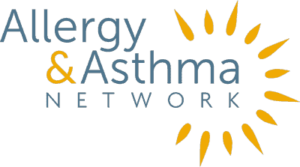Anaphylaxis Statistics
- Home
- |
- Anaphylaxis
- |
- Anaphylaxis Statistics

Anaphylaxis Prevalence
Between 1.6 and 5.1% of the United States Population have experienced anaphylaxis 9
Definition of Anaphylaxis
Anaphylaxis is a sudden onset of severe and potentially life-threatening symptoms that occur within minutes to hours of exposure to an allergen 1
Causes of Anaphylaxis
Anaphylaxis is caused by exposure to a trigger or allergen. The most common triggers include 2:
In infants, food accounts for 73% of anaphylaxis symptoms. The most common trigger foods are egg, milk, peanut, and banana. Drugs account for 20% of anaphylaxis cases in infants, followed by unknown triggers. 13
Symptoms
Symptoms may affect the skin, respiratory system mucosal system (tongue, lips, throat), gastrointestinal system, and cardiovascular system 1
- 80-90% of patients report subjective or general symptoms and skin issues 4
- 62% develop hives 4
- 53% develop angioedema (swelling of the mucous membranes, such as the tongue, lips or throat) 4
- 27% develop vomiting 4
- 24% report nausea 4
- 16% report abdominal pain or cramping 4
- 5% develop diarrhea 4
Treatment of Anaphylaxis
- Primary Treatment: Epinephrine should be the first treatment for anaphylaxis. It should be administered as soon as symptoms develop, with the preferred method being intramuscular injection 7
- Secondary Treatments – there is no substitute for epinephrine, but other treatments may help manage symptoms. These may include:
- H1 antihistamines such as cetirizine or diphenhydramine, though the latter may be more sedating. These may help reduce itching and hives 7
- H2 antihistamines such as ranitidine or famotidine may be used in conjunction with an H1 antihistamine to reduce symptoms 7
- Bronchodilators such as albuterol may help in individuals experiencing bronchospasm 7
- Glucocorticoids have been commonly given, but there is little evidence that these are beneficial 8
- Supportive Treatment: Focus is to manage airway, breathing and circulation. These may include:
- Positioning to provide circulation to vital organs while ensuring airway is maintained 7
- Supplemental oxygen 7
- Insertion of intravenous catheters which can be used to administer medication and fluids 7
- Monitoring of heart rate, blood pressure, respirations, oxygen level 7
- Maintaining airway, which may require intubation 7
- Cardiopulmonary resuscitation (CPR) when necessary 7
Anaphylaxis Morbidity and Mortality
- Most people report more 2 or more prior episodes of anaphylaxis 9
- 19% report more than 5 episodes 9
- 42% sought treatment within 15 minutes of the onset of symptoms 9
- 34% went to the hospital 9
- 27% treated themselves with antihistamines 9
- 11% self-administered epinephrine 9
- 10% called 911 9
- The fatality rate for an anaphylactic reaction in the United States is about 0.3% 10
School Children and Anaphylaxis
- Approximately 10% of schools reported anaphylactic events in the 2013-2014 school year 11
- All 50 states permit students to carry and self-administer epinephrine 11
- Many schools provide training on identifying anaphylaxis:
- Schools often limit who can administer epinephrine:
Economic Burden of Anaphylaxis
References
-
- https://www.aaaai.org/Aaaai/media/MediaLibrary/PDF%20Documents/Practice%20and%20Parameters/2015-Anaphylaxis-PP-Update.pdf
- https://onlinelibrary.wiley.com/doi/10.1111/all.12437
- https://onlinelibrary.wiley.com/doi/10.1111/all.12272
- https://www.researchgate.net/profile/Alberto_Alvarez-Perea2/publication/281311091_Anaphylaxis_in_AdolescentAdult_Patients_Treated_in_the_Emergency_Department_Differences_Between_Initial_Impressions_and_the_Definitive_Diagnosis/links/564aee2908ae44e7a28e41b0/Anaphylaxis-in-Adolescent-Adult-Patients-Treated-in-the-Emergency-Department-Differences-Between-Initial-Impressions-and-the-Definitive-Diagnosis.pdf
- https://www.aaaai.org/Aaaai/media/MediaLibrary/PDF%20Documents/Practice%20and%20Parameters/Insect-hypersensitivity-2011.pdf (3/15/20)
- https://www.ncbi.nlm.nih.gov/pmc/articles/PMC5446992/ (3/15/20)
- https://www.uptodate.com/contents/anaphylaxis-emergency-treatment (3/21/20)
- https://www.ncbi.nlm.nih.gov/pubmed?term=22513951 (3/21/20)
- https://www.ncbi.nlm.nih.gov/pubmed/24144575 (3/21/20)
- https://www.ncbi.nlm.nih.gov/pmc/articles/PMC3972293/ (3/21/20)
- https://www.ncbi.nlm.nih.gov/pmc/articles/PMC5314730/ (3/21/20)
- https://www.ingentaconnect.com/content/ocean/aap/2012/ 00000033/00000004/art00012;jsessionid=203st4xj13im5.x-ic-live-01
- https://www-clinicalkey-com.ezproxy.library.tufts.edu/#!/content/playContent/1-s2.0-S108112061830783X?returnurl=null&referrer=null
Visit Our Other Pages for More Anaphylaxis Information, Webinars, Posters, Infographics, and more!
Can't Afford Your Anaphylaxis Medication?
Anaphylaxis Statistics
Anaphylaxis Posters and Infographics
Anaphylaxis Webinars
